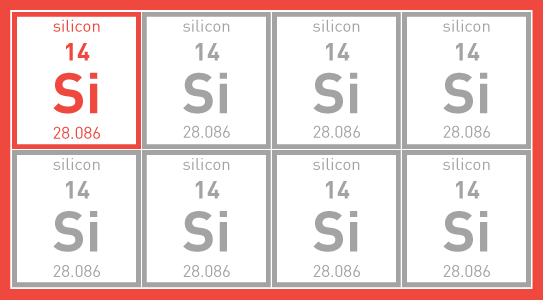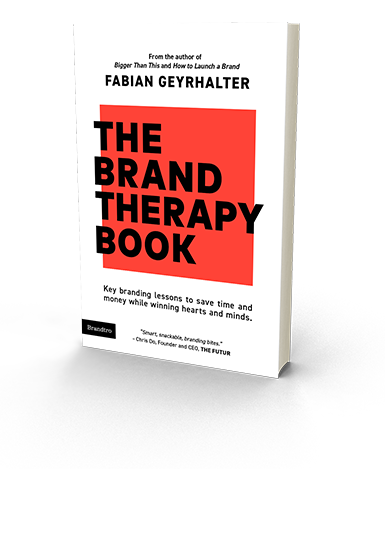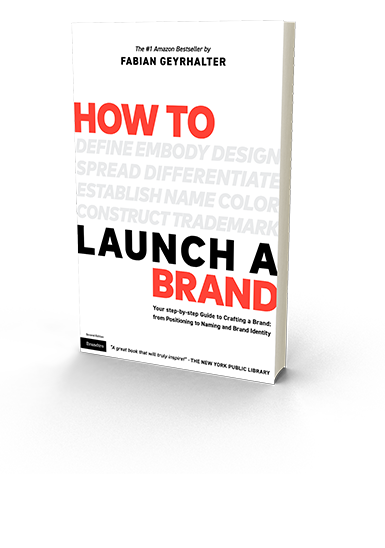Tag Archives: Innovation
A Call To Arms: The Task Of Disrupting Gun Violence Is Now On Silicon Valley

I write about branding and not about politics. Not because I don’t have a viewpoint, but because there are many smart(er) people discussing politics, and I am smart enough not to touch the subject of politics in my professional life. That being said, last week’s rampage of a disturbed 22 year old in a California college town (who legally purchased his guns despite known doubts about his mental state) was yet another one of many gun-amok stories we read on a nearly weekly basis in the United States. This is about politics, yes, clearly, but providing a solution to it is about society, intervention and invention, something I do like writing about.
Solutions are being brought to the table by amazing entrepreneurs (and funded by Silicon Valley VCs), such as the smart gun, but since the gun lobby won’t give in anytime soon, we won’t see these products disrupt the market. Now it is up to us brilliant civilians to intervene. If we can not stop guns from being freely accessible to anyone, what can be done to prevent these crimes from happening? Today I find this question more exciting than other disruptive innovation conversations, which for anyone who follows my thoughts knows that these are usually the conversations I enjoy the most. In times where apps can be written overnight to assist most any specific pain point, and Google (as a whole) can detect nearly anyone and anything online, how can it be that a clear plan of this attack was posted on YouTube a day prior to the massacre happening, and yet it still did happen?
Why can’t there be a search app, like mention, that specifically sifts through social media for phrases detecting sociopath attacks like these? Seems like it could be created easily and monitored by volunteer analysts. Call me naive, and it very well will not be quite that simple, but I have absolutely no doubt in my mind that some of the brilliant people reading this post can come up with an MVP that can be pushed into a live beta very quickly. If the ROI we see is one single potentially saved life, I feel that this in itself would be worth the effort. The government and the NRA let us down, now we look at you Silicon Valley; not because you are an easy target in 2014, but because I for one truly believe that at least the temporary ‘solution’ to disrupt this vicious cycle lies in the talented hands of a single programmer or an outraged entrepreneur. And there is no place better to look for that than in Silicon Valley.
CATEGORIES: Blog Startup Advice
The True Tech Startup Trend: Cloned Apples From Cloned Trees
Many tech startup founders pitch their project by saying ‘It’s just like Instagram, but with [filling in their differentiator],’ or, ‘Imagine Pinterest, but only [filling in their differentiator]’. Quite peculiar, most of them are located in places like Silicon Alley, Silicon Hill or Silicon Forest.

With ‘startup’ being the thing to do for many (particularly right out of college) this hot minute, it is the idea of starting something (anything really) that is often greater than the business idea in itself. Innovations turned into variations of the same, leaving the invention behind, while startup meccas themselves turned to cloned names: Silicon Alley (New York), Silicon Beach (Los Angeles’ West Side – Note: we pushed for the name Tech Coast), Silicon Roundabout (London), Silicon Forest (Portland), Silicon Hill (Washington D.C.) not to be mistaken with Silicon Hills (Austin), Silicon Border (Mexicali), Silicon Sloboda (Moscow) and many more.
Silicon Valley was named after the prosperous semiconductor manufacturers that were inhabiting the surrounding San Francisco area in the 1970’s. Today, as too many Silicon Valley clones are churning out too many Snapchat clones, it is time to remind ourselves what Silicon Valley was named after: An element; and there are no two elements that are alike. Silicon as an element only exists once. The periodic table is yours to experiment with.
Time to get creative. I can’t wait to hear about, better yet, be part of that journey.
CATEGORIES: Startup Advice Your Brand Launch: Naming
What I Learned From Being A Mentor To Startups (And 3 Ways You Can Benefit From It)
Over the past 2 weeks I’ve given 4 presentations on ‘How to Launch a Brand‘, coinciding with our upcoming book release of the same title, which consisted of a combined 3 hours of Q&A with startup entrepreneurs ages 16 to approximately 54. I also conducted 12 one-on-one mentoring sessions. I felt it was time to reflect and share what I’ve learned through talking with these ambitious and energetic innovators and disruptors:
1. Pitch Perfect Heart & Soul
When you have only 60 seconds to pitch – and there’s a whole lot to convey in that time – it seems to make sense to learn it by heart. Wrong. If you present your passion project it should not sound like it comes from an automated machine. It will lack heart and soul…and the most important asset: your pitch will be missing you. The same holds true for anyone giving any sort of presentation. Know your stuff and definitely prepare your speaking points, but don’t read it all off your notes or have it memorized sentence-by-sentence. You will never be able to truly connect with your audience that way. In whatever business presentation you find yourself in, your audience will always want to get to know a little bit about the person behind the speech.

How To Launch a Brand – Founder Institute 06/24/2013
2. Pretend You Know Nothing
A defensive person in an advisory conversation is most unappealing. As a trained Graphic Designer, this lesson took me over a decade to learn and almost another one to perfect. If you walk into a conversation with an open mind, ready to listen and learn, thinking to yourself that you know nothing (or ‘You Suck‘ as a fellow mentor at The Founder Institute put it), you will allow yourself to absorb. What you do with the gained knowledge is up to you in the end – it’s a take it or leave it. If you are never open to taking it in the first place you will only be left out.
3. Be Bold And Seize The Moment
You listened to a speaker, you leave the room inspired and get started implementing his or her advice. Or you could walk up to them, introduce yourself, and start a conversation. Or connect via LinkedIn the day after and request a quick call. It happens all the time. Approximately 20% of attendees connect with me and ask for a couple of minutes of my time. Could I say no? Yes. Is there a big chance I won’t? Yes. All it takes is courage. Ask and you shall receive. The next generation is doing this, they are the bold connectors and will soon steer the ships we all think we are captains of. Let’s adapt that boldness.

Santa Monica Youth Tech Program Mentoring – Coloft 06/25/2013
Stay in the loop about future events and additional thoughts on brand launches by following us on Facebook.
CATEGORIES: Blog Startup Advice
New Brand Adopter: Alex Osterwalder adopts Sifteo
Alex Osterwalder is the lead author of the global best seller Business Model Generation and inventor of the Business Model Canvas. Currently, working on Strategyzer.com, a strategy and innovation platform. Blogging at http://www.businessmodelalchemist.com
Our burning question: Which recent brand launch do you admire?
“I was pretty impressed by the launch of Sifteo Cubes. The online presentation, the packaging, and the product itself are great. I’m a big fan of the “unboxing experience” I got used to with Apple products. Sifteo provides the same for their cubes. The packaging is so beautiful, well designed, and practical that you can only love unpacking their product. So what about the product itself? My kids, the final users, simply love playing with the cubes.”
FINIEN Weighs In
We did not expect anything less inventive coming from Alex after hearing him deliver the keynote address at the Front End Innovation Symposium in Boston two weeks ago, Sifteo Cubes are just plain cool. “Sifteo Cubes are small computers that display graphics on their top surface and sense one another and how they are being moved….were developed as a platform for hands-on interactions with digital information and media (Wiki)” No surprise that they were derived by two MIT grads. OK, let’s talk brand.
The Name
We love names without preconceived notions. They eliminate domain name fights and they are ready to be branded by the sole marketing of themselves. Sifteo is easy to say, but it’s not the easiest to remember. For a kid, it’s not sticky, a kid wants something fun to say that evokes an emotion or recollection of the product. Sifteo sounds latin, which is to say rather serious. So what does Sifteo mean? It is not clear if much sifting is going on, unless we go deep down into metaphor abyss of which we will spare you. Siftables was the name of the prototype product, which must have turned into Sifteo, the company and then Sifteo Cubes, the product. What’s next? If their product offering grows in the future, will all product names be sifted through the same siev? Matching names between a parent company and its product lines can limit expansion opportunities and create a dynamic between products in which successes and failures hinge upon one another. A short term solution that is missing long term naming and expansion strategy.
FINIEN Brand Happiness Barometer: Name 2 (out of 10)
The Identity

The identity design is as uninspired as the product itself is inspired, and inspiring. The type is bland (very ‘techie’), the colors are expected and as a combo it simply fails to stand out. The attempt of a somewhat, not really square typeface could have been explored further and as such starting with the letter ‘o’ (aka a real square) a story could have been told by integrating the three cubes (aka the product) into the logotype. It would have served as a strong foundation of the brand identity as a whole. A lost opportunity.
FINIEN Brand Happiness Barometer: Identity 4 (out of 10)
The Digital Design
Alex praised the packaging, to say the least, it nearly sounded erotic, so we take his word for it. From the outside, the packaging takes the same straight forward, clean and product focused path that the web site promises. The online experience often being the first touch point of parent as well as offspring (aka ‘end user‘), the site fails to connect with the target audience on an emotional level though, may it be with the kids looking for a fun and engaging element or the parents looking for an online experience that matches the product price point. An experience needed to be crafted and content catered to a specific audience. The sifteo web site feels like a site where strategy and design were derived by an overwhelmed developer and content strategy by the sales team. All of it organically, so it seems. With that being sa(i)d, we do prefer its clean and to the point design over bad design and UX altogether. Gotta go and play with these shiftable, ah, siftable cubes now.
FINIEN Brand Happiness Barometer: Digital 7 (out of 10)
CATEGORIES: Your Brand Launch: Brand Atmosphere






